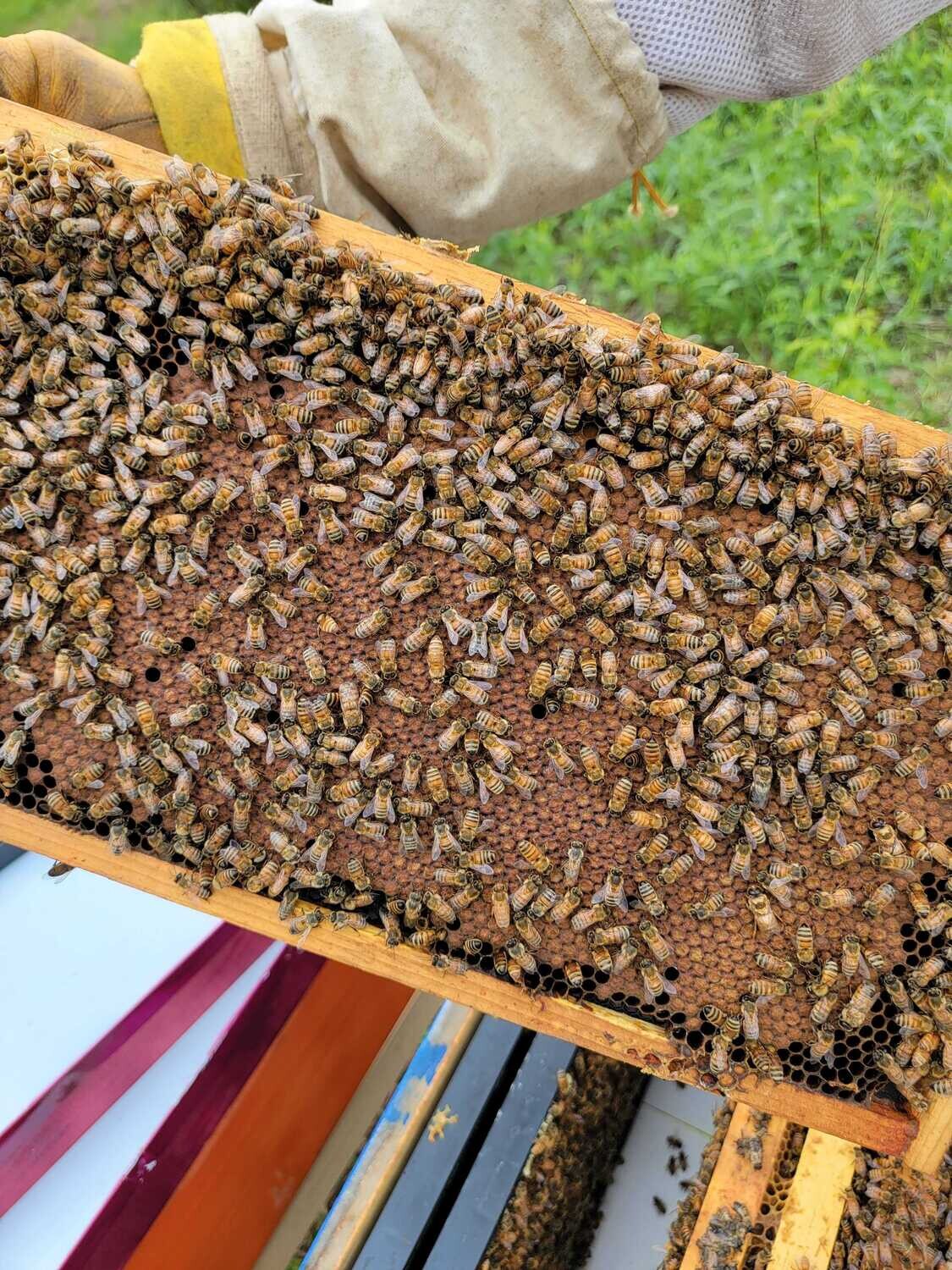Introduction:
A healthy hive is the foundation of successful beekeeping, and understanding honey bee health and disease prevention is crucial to encouraging population growth and honey production. As a beekeeper, it is your responsibility to care for these remarkable creatures and ensure that their well-being is always a priority. Familiarizing yourself with the potential disease risks, best prevention practices, and effective treatments will ensure that your hive thrives for years to come.
In this comprehensive guide, West River Exchange will arm you with the essential knowledge needed to become a “Bee-Smart” beekeeper. Learn how to identify the signs of common honey bee diseases and uncover tried-and-true tips for maintaining a healthy hive. By taking a proactive approach to honey bee health, you can safeguard your colony and reap the sweet rewards of a successful apiary.
1. Understanding the Basics of Honey Bee Health
To maintain a thriving hive, it is essential to understand the basic needs and behaviors of honey bees. A vibrant colony requires access to diverse sources of nectar and pollen, clean water, proper ventilation and temperature control, and protection from harsh weather conditions and predators. By providing these essentials, you are laying the groundwork for a healthy and productive hive.
A well-balanced diet is vital for honey bee health, ensuring that they have the necessary nutrients to resist diseases and parasites. Promote forage diversity by planting various types of flowers around your apiary. Monitor your bees’ behavior, paying attention to signs of distress, such as excessive swarming or aggressive behavior. These can be early indications of underlying problems that need immediate attention.
2. Recognizing Common Honey Bee Diseases and Parasites
Honey bees are susceptible to a variety of diseases and parasites that can compromise their health, including:
– American Foulbrood (AFB): This bacterial disease can wipe out an entire colony if left untreated. Symptoms include dark, sunken, and punctured brood cappings, as well as a foul odor and the presence of brown, sticky larval remains.
– European Foulbrood (EFB): This bacterial infection mainly affects the larval stage of honey bees. Symptoms include twisted, dead larvae that turn a yellow-brown color and a sour smell in the hive.
– Varroa Destructor Mite: These parasitic mites weaken honey bees by feeding on their blood and transmitting viruses. An infestation can cause the collapse of a colony. Symptoms include deformed wings, stunted growth, and patchy brood patterns.
– Nosema: This fungal disease affects honey bee digestive systems and causes dysentery, weakness, and decreased lifespan. Symptoms include staining and fecal spots on the hive entrance and the presence of dead bees near the hive.
Regularly inspect your hive to note any abnormal behaviors or symptoms, and address these issues promptly.
3. Disease Prevention Techniques for a Robust Hive
Disease prevention is crucial to keeping your honey bees healthy. Adopt these best practices to minimize the risk of illness in your colony:
– Biosecurity Measures: Limit the spread of diseases by wearing proper protective gear, frequently cleaning and disinfecting your beekeeping tools, and avoiding the sharing of equipment between hives or with other beekeepers.
– Regular Inspections: Routinely check your hive for symptoms of illness, as early detection is crucial for successful treatment and containment. Establish a consistent record-keeping system to monitor the health and progress of your colony.
– Integrated Pest Management (IPM): Utilize a range of strategies to control pests and diseases in your hive, including chemical, biological, and cultural methods, to minimize the impact of chemical treatments on the bees.
– Create a Stress-Free Environment: Stressors such as overcrowding, inadequate ventilation, lack of nutrition, and temperature fluctuations can lead to weakened immune systems in honey bees. Minimize stress by providing an optimal environment for your colony.
4. Treatment Options and Resources for Honey Bee Diseases
Treatments for honey bee diseases and parasites vary depending on the type and severity of the issue. Some treatments include:
– American Foulbrood (AFB): Treatment options are limited, and infected colonies are often destroyed to prevent the spread of disease. However, Terramycin may be used to control AFB if spotted early.
– European Foulbrood (EFB): EFB can be treated with antibiotics such as oxytetracycline. However, it is crucial to consult a professional or local apiary inspector before administering any treatments.
– Varroa Destructor Mite: Miticides, including Apistan and CheckMite, can be used to control mite populations in the hive. Always follow the manufacturer’s instructions for proper usage and application.
– Nosema: Fumagillin, an antibiotic, can be used to treat Nosema infections. However, it is essential to consult a professional or local apiary inspector before administering any treatments.
Securing the Future of Your Hive with West River Exchange: Expertise in Honey Bee Health
Honey bee health is paramount to the success of your apiary and the well-being of the environment. As a responsible beekeeper, you have a vital role to play in disease prevention, early detection, and appropriate treatment. Equip yourself with the knowledge and resources necessary to ensure a thriving and resilient hive.
West River Exchange is your trusted partner in honey bee health, offering valuable information, support, and products that cater to the unique needs of your colony. Collaborate with us to uphold the highest standards of honey bee care and contribute to a sustainable, flourishing ecosystem.
Ready to elevate your beekeeping journey and safeguard the health of your honey bees? Visit West River Exchange’s online store now to explore our range of honey bee supplies in Ohio and expert advice to fortify the future of your apiary. Contact us today.

